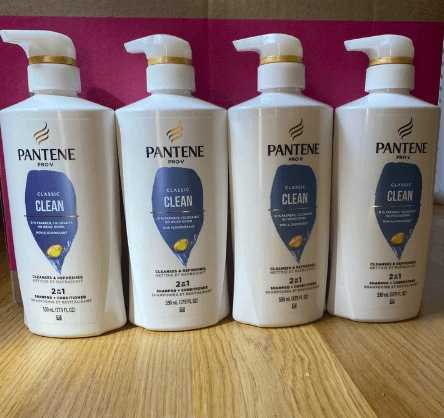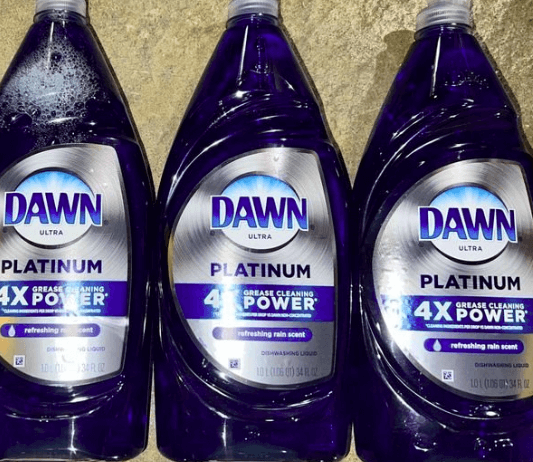Fabric softeners leave clothes feeling soft and fresh after laundry, but the downside is that they sometimes leave those oily stains that seem to downplay your hard work.
Getting these stains off is pretty straightforward. This article will discuss the different ways to get fabric softeners out of clothes.
How to Get Fabric Softeners Stains Out of Clothes
Imagine spending your day doing laundry, then you pull your clothes out of the washer and notice these greasy stains on your clothes; just the kind of thing to ruin your day.
Well, we wouldn’t want your day ruined, so here are ten ways to get fabric softeners out of clothes below:
1. Rewash the Garment
Fabric softener stains are usually not stubborn and can come out with a rewash. Just run another wash cycle with detergent and do not add softeners. If the stain does not come out, try any other method below.
2. Use a Tablet Soap

Wet the stain with warm or cold water; always check the clothing label to know the water temperature suitable for washing. Rub on the stain with the tablet soap, and use your fingers or a toothbrush to scrub lightly.
3. Use a Shampoo

Put a few drops of shampoo on the stained area after wetting it with water, rub the shampoo in with your fingers the same way you would if you were using a tablet soap, and wash your clothes and dry.
4. Use Vinegar
Vinegar has turned out to be a helpful element in homes, and the acidic property of vinegar makes it perfect as a stain remover. Be sure you’re using white vinegar and not apple cider. As a plus, vinegar softens fabric as well as removes stains. To use it, follow these simple guidelines below:
Step 1: Toss your clothes into the washing machine and fill it with water to the recommended level for soaking.
Step 2: Add a cup of distilled vinegar to the wash water, or you can add this to the wash compartment.
Step 3: Run a complete wash/rinse cycle.
Step 4: Repeat the wash cycle if the stain is not gone and continue until the fabric softener stain is removed.
Note: Do not add detergent or liquid soap besides vinegar; it works best alone. Also, do not put undiluted vinegar directly on colored fabrics, as it can bleach the material’s color.
5. Use Dish Soap

Your dish soap can do more than get your plates clean, and it can also eliminate stubborn fabric softener stains as they are formulated to remove grease and oil. Follow these steps to remove softener stains with dish soap below:
Step 1: Wet the area with warm water.
Step 2: Cover the stain with dish soap.
Step 3: Work the soap into the fabric with your fingers or use a soft-bristled brush to scrub lightly at the stained area.
Step 4: Soak the fabric in warm water for an hour or two. Add a few drops of dish soap to the water.
Step 5: You can go back in with the brush again if the stain is still on the fabric after soaking. It will be easier to get it off this time as soaking the fabric loosens up the stain from the fabric fibers.
Step 6: Rinse the fabric and dry.
Note: For extra stubborn stains, follow the instructions for washing with vinegar after soaking. Your clothing will come out clean and stain-free.
6. Use Oxygen-based Bleach
Fabric softener stains are usually not noticed until your clothes have gone through the dryer, and drying fabric softener residue or any stain makes removing them challenging.
However, all hope is not lost, as we have oxygen-based bleach to the rescue. Here is a step-by-step guide to how to use it below:
Step 1: Fill a tub with warm water.
Step 2: Add the recommended amount of bleach to make a solution.
Step 3: Soak the stained clothes in it for at least four hours and, if possible, overnight.
Step 4: Wash the fabric using the hottest setting specified on the fabric.
Step 5: Do not add extra detergent or softener.
Step 6: Dry your clothing after ensuring the stains have been eliminated.
7. Use An All-fabric Bleach
Here is a step-by-step guide to how to use an all-fabric bleach below:
Step 1: Dampen the stain with warm water.
Step 2: Rub in some liquid detergent and bleach on the stain.
Step 3: Wash the fabric in the hottest setting recommended and dry.
8. Use Concentrated Liquid Detergent

Concentrated liquid detergent is robust for large and difficult stains to remove. Here is a step-by-step guide on how to use it below:
For non-heat-sensitive garments
Step 1: Soak the garment in hot water for ten minutes.
Step 2: Pour some liquid detergent on the fabric stain and rub it with your fingers.
Step 3: Mix the detergent and water in a tub to form lather and soak the garment for at least ten minutes.
Step 4: Wash the cloth normally in the hottest setting specified on the label.
For heat-sensitive materials
Step 1: Mix the detergent with cold water in a tub.
Step 2: Soak the stained garment as pretreatment.
Step 3: Pour the liquid detergent on the stain and scrub lightly with your fingers.
Step 4: Place your clothes in the washing machine and run a complete wash and rinse cycle.
If the stain persists, repeat the process for both heat-sensitive and non-heat-sensitive materials.
9. Use Alcohol

Denatured alcohol and isopropyl alcohol work well as degreasing agents. Before using alcohol on your clothes:
Step 1: Test it on a small part to ensure it does not produce discoloration.
Step 2: Moisten a cotton ball with denatured alcohol or isopropyl alcohol and rub it on the stain.
Step 3: Rinse the garment with warm water and air dry.
Please note that alcohol is unsuitable for acetate, rayon, silk, or wool materials.
10. Use Baking Soda
You may know baking soda as a pantry ingredient, but it doubles as a laundry agent and is used to remove stains and a musty smell from clothes. To use baking soda:
Step 1: Create a paste by mixing baking soda and water with a ratio of 2:1, respectively.
Step 2: Apply the paste to the stain and leave for 30 minutes to 1 hour.
Step 3: Wash with a detergent and dry. If the cloth is wet, you can sprinkle baking soda and repeat the process.
Something to Note:
To prevent further stains on your clothes because of fabric softener, note the following precautions below:
- Do not pour fabric softener directly on clothes.
- Dilute your fabric softener with equal parts of water to help your washer dispense the liquid.
- Clean out your dispenser to remove fabric softener residue.
- Avoid overloading your washer to prevent some clothes from getting excessive exposure to fabric softener than others.
- Shake your bottle of fabric softener before use.
- Use a detergent with a built-in fabric softener or a substitute softener such as white vinegar.
